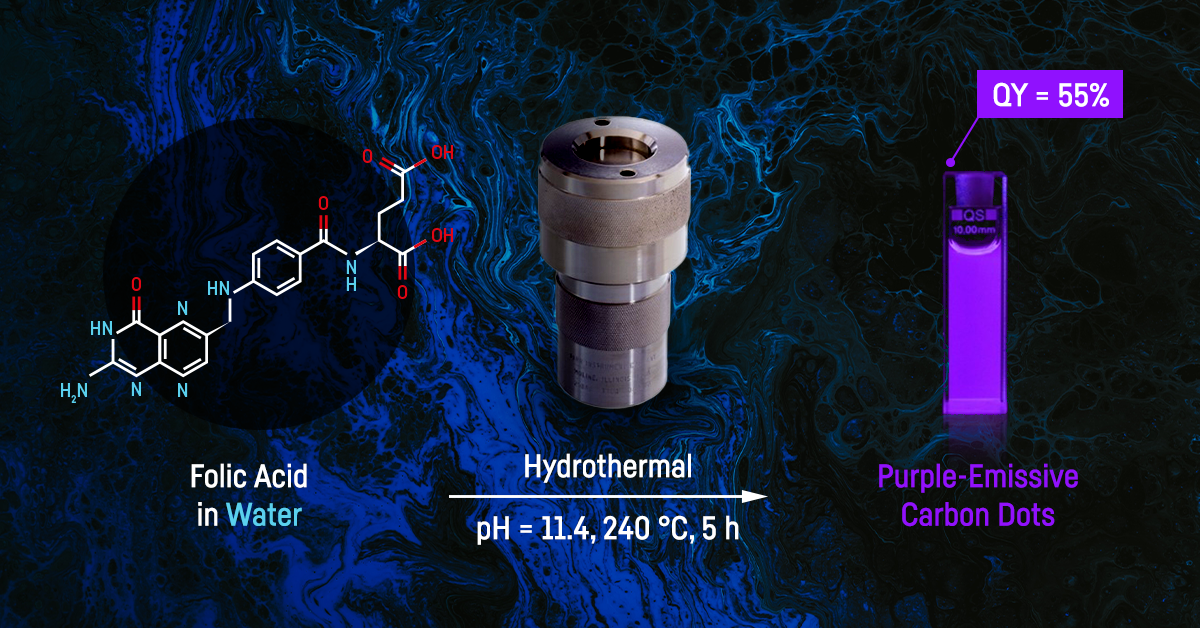Purple carbon dots increase the sensitivity of silicon detectors
Carbon dots (CDS) represent biocompatible and eco-friendly photoluminescent nanomaterials whose optical properties can be controlled by tuning the particle size, graphite core doping and the chemical properties of their surface functional groups. RCPTM workers have previously demonstrated the use of different types of CDs for in vivo temperature measurements in living cells (Kalytchuk et al. ACS Nano 2017), bioimaging (Li et al. ADV. Mater. 2018), photothermal anticancer therapy (Bao et al. Light Sci. Apple. 2018), developing LED diodes (Tian et al. ADV. Opt. Mater. 2017), and effective photocatalysis (Devaki et al. Green Chem. 2018).
Recently, RCPTM research has focused on new optoelectronic applications. In the journal Nanoscale, the Royal Chemical Society, the scientists first described the synthesis of carbon quantum dots that emit light in the purple region and are highly stable in both a colloidal state and as a polymer film. It is the “purple” carbon dots which have been absent from the colour range of published CDs. Such dots, which show a large yield of photoluminiscence (ca 55%), were integrated into a silicon photodetector, resulting in a relative increase, of more than 200%, in photoresponsivity in the UV area. The work represents an elegant way to increase the efficiency of silicon detectors in the UV area, which can be deployed in solar sensors, spectrophotometers, radiation detectors or wireless optical communication systems.

https://pubs.rsc.org/en/Content/ArticleLanding/2020/NR/D0NR00505C


